For Facebook Ads, targeting is critical to delivering a positive return on advertising investment. With around 3.07 billion monthly active users, reaching the right audience with ads helps limit waste and increase campaign effectiveness.
Understanding how to best leverage data to refine your Facebook ad audience targeting will make your social media marketing campaigns more effective. In this blog post, we’ll summarize the relevant Facebook audience targeting options and offer practical strategies to help you specify your target audience and run more profitable marketing campaigns.

What is a Facebook Target Audience?
A Facebook target audience is a group of Facebook users that an advertiser wants to reach with their ad campaigns. Facebook allows ads to be targeted to relevant audiences, enabling advertisers to reduce waste and improve the efficiency of their marketing budgets.
Facebook offers several targeting methods. Advertisers can target Facebook audiences using their own data that they onboard, premium third-party data sources, or the audience data that Facebook collects from its platform users.
Each option is valuable for different reasons and can be used individually or in combination with other Facebook ad targeting options.
Why define a target audience on Facebook?
Targeting ads on Facebook, however it’s accomplished, is a means to increase return on ad spend (ROAS) and reduce waste in advertising budgets. Rather than showing ads to all users, you reduce the potential audience to just those who are more likely to find your ads relevant.
Is Advertising on Facebook Effective in Reaching a Target Audience?
Thanks to its advanced targeting capabilities and massive user base, Facebook is one of the most effective platforms for reaching a specific audience. Whether you use first-party data, Facebook’s behavioral and interest data, lookalike modeling, or third-party lists, Facebook makes it easy to reach the right audience.
This level of precision improves campaign performance and reduces wasted ad spend, making Facebook advertising a smart choice for brands that want results.
Facebook Audience Targeting Strategies that Work
Learning how to target Facebook audiences with ads can be a mix of art and science. The most important thing is to continuously learn from trial and error to optimize your ad spend. A few of the most impactful approaches are:

Bring Your Own Customer Data
By using Facebook Custom Audiences, advertisers can bring their own first-party customer data to their campaigns and use it to target Facebook ads. This can be highly effective, especially in driving increases in purchase volume and frequency.
Use Third-Party Data
When Facebook deprecated its Partner Categories, it left advertisers without an easy way to access industry-leading data providers’ products on its platform. The capability did not disappear, however; it has just become a bit more challenging to enable.
With Deep Sync One, advertisers can access premium data and activate it for use on Facebook.
Leverage Facebook’s Data and Core Audiences
Facebook collects a wealth of data about its users, and Facebook makes this data available for advertisers to utilize for ad targeting. While there are some blind spots, using this data can deliver significant efficiencies to advertisers’ campaigns.
Test & Learn
As always, it’s critical to continue to try new Facebook ad targeting strategies and optimize towards those that perform best. Review your results, and use what you’ve learned to improve your next campaign!
What Are the Types of Facebook Ad Audiences?
Targeting ads on Facebook can be straightforward thanks to a variety of audience selection options. In Facebook Ads Manager, there are three primary types of audiences you can use: Custom Audiences, Saved Audiences, and Lookalike Audiences.
These tools allow advertisers to tailor their campaigns to the right people and improve performance by reaching users most likely to engage.
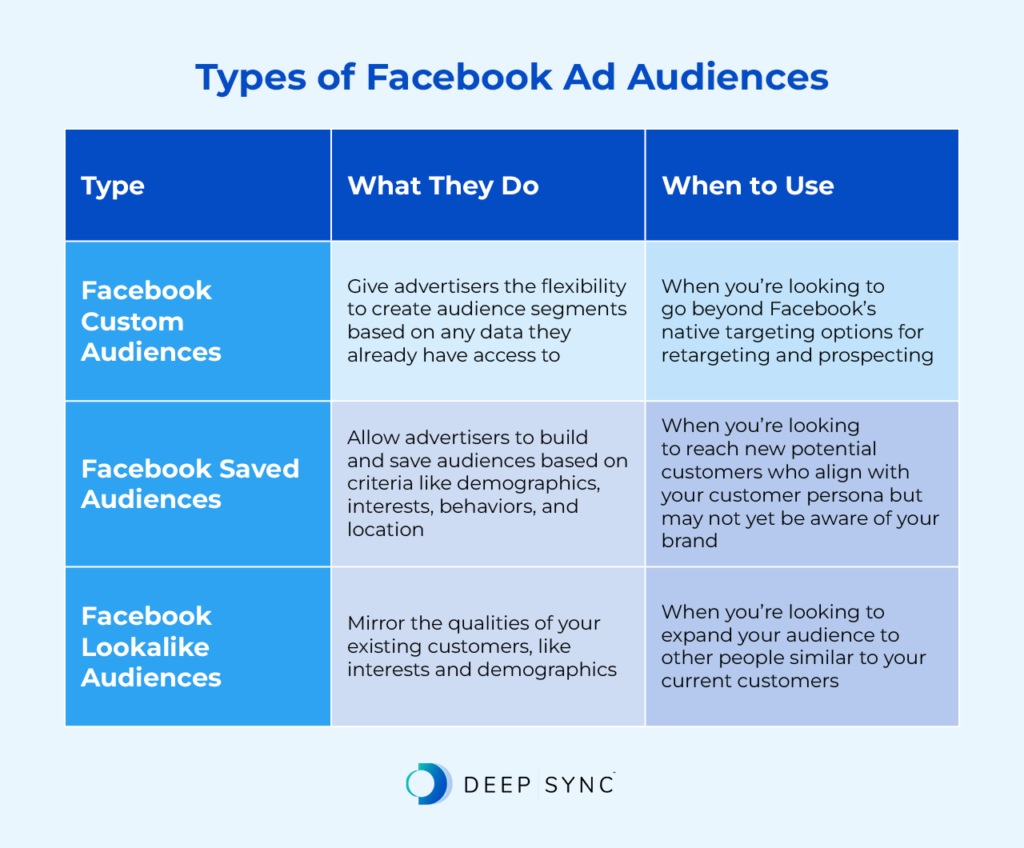
Facebook Custom Audiences
Facebook Custom Audience targeting gives advertisers the flexibility to create audience segments based on any data they already have access to, such as existing customers, website visitors, prospect lists, or third-party data sources.
For example, advertisers can create a Custom Audience using prospect lists, newsletter sign-ups, or premium data purchased from providers like Deep Sync. These audiences must be created in Facebook Ads Manager by selecting “Audiences” under the Tools menu.
When to Use a Facebook Custom Audience
Facebook Custom Audiences are ideal for advertisers looking to go beyond Facebook’s native targeting options. Whether you’re uploading a first-party customer file with your existing audience, using tracking data from your website or app, or activating an external audience segment, Facebook Custom Audiences help you extend your targeting beyond Facebook’s built-in options.
Custom Audiences provide a versatile foundation for both retargeting and prospecting, allowing advertisers to reach people with a known connection to their brand. Because these audiences are already familiar with or relevant to your brand, you can often expect higher engagement and conversion rates compared to broader, interest-based targeting.
Facebook Saved Audiences
Facebook collects user data from profile information and on-platform behavior, which it organizes and classifies within Core Audience criteria. These categories are defined based on various targeting factors, such as demographics, interests, behaviors, and location.
Advertisers build audiences when creating a campaign. If they appear for future use, they will appear under Saved Audiences in the Audiences section of Ads Manager.
When to Use a Facebook Saved Audience
These audiences are excellent for reaching new potential customers who align with your customer persona but may not yet be aware of your brand. It helps you reach a new set of prospective customers who have similarities to your current customers. They might currently be working with your competitors or more traditional solutions.
Facebook Lookalike Audiences
Facebook Lookalike Audiences are audiences that Facebook creates to mirror the qualities of your existing customers, like interests and demographics. Facebook leverages core audience data to find users similar to users in your targeting group.
These are cold audiences, but they’re likely to be interested in your business because they’re similar to people who are already on your radar.
When to Use a Facebook Lookalike Audience
Lookalike modeling, via Facebook lookalike audiences, takes other data points about users in your target audience and uses them to try to find other people who might be similar to your target.
But, are Facebook lookalike audiences effective? The accuracy of the resulting audience may not be as high as the initial target audience, but this can be useful when looking to increase the reach of a campaign.

How To Specify Your Facebook Ad Target Audience
Once you understand the types of Facebook ad audiences, the next step is to define and refine your audience targeting on Facebook.
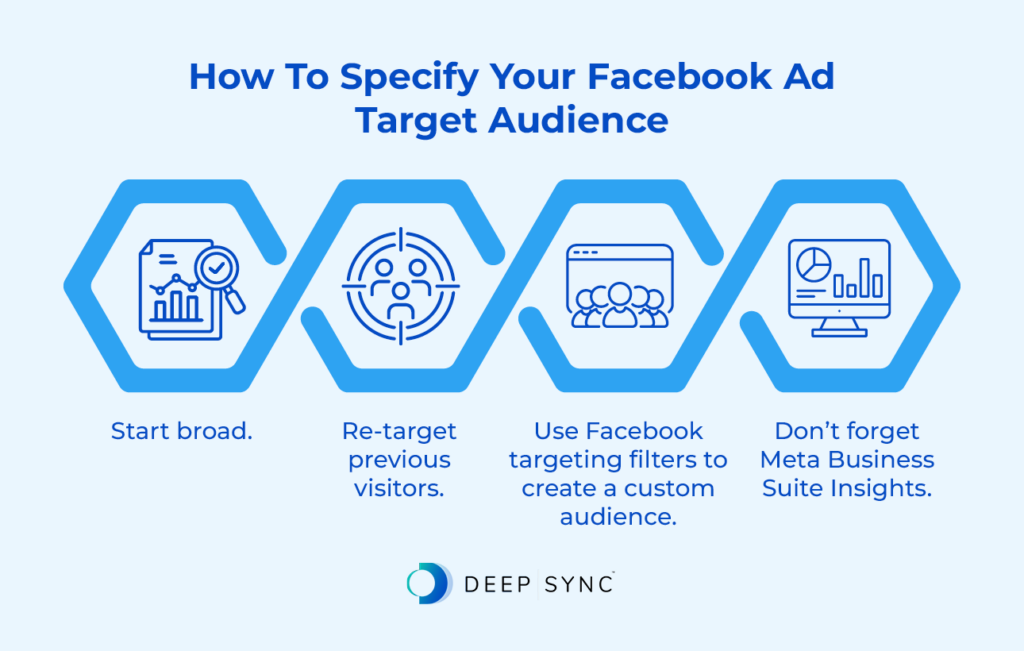
Start Broad
If you’re new to Facebook advertising, or even if you’re venturing into a new product line or service, you might feel overwhelmed or unsure about your target demographics. This uncertainty might make you hesitant to commit to a narrowly defined audience.
The beauty of digital advertising is that it allows for continual testing, learning, and refining. This is possible due to Facebook’s flexibility and robust data collection capabilities.
Initially, your understanding of your audience might be a little fuzzy, and that’s okay! In the early stages of your advertising campaign, you might have a vague idea of who your target users might be.
You can translate this initial, perhaps sketchy, perception into a broad audience profile in your ad campaigns. By doing so, you’re casting a wider net to capture a variety of users who might find your product or service relevant.
As your campaign progresses and collects data, you’ll start to see trends about who is engaging with your content and, more importantly, who is converting from a viewer to a customer. You can use these insights to gradually refine and narrow down your target audience.
This iterative process helps to transform a somewhat nebulous audience into a well-defined, targeted group of potential customers, improving the efficiency and effectiveness of your marketing efforts. This strategy is not just about playing it safe—it’s about being smart and using data to guide your decisions.
Re-Target Previous Visitors
When creating an ad campaign, you have to think about the whole funnel—not just the point of conversion to paying customers. People who are already aware of your brand are more likely to convert than cold audiences, making them a high-priority target audience.
Retargeting these users can serve as a reminder of their initial interest and nudge them toward a conversion. It’s a powerful way to reach people who have already shown interest in your business.
Imagine a user who has visited your blog, read your articles, or perhaps even subscribed to your newsletter. Or if you’re in e-Commerce, a potential customer who browsed through your online store, added items to their shopping cart, but, for some reason, didn’t complete their purchase. These individuals have already expressed an interest in your products or services. They are already familiar with your brand.
Retargeting these users with your Facebook ads is akin to gently reminding them of their initial interest. It’s a way of saying, “Hey, remember us? We noticed you were interested.” This not only increases your brand recall but can also nudge them closer to the conversion line.
This could include individuals who have visited your website, browsed your online store, or even added items to their cart without completing the purchase. By tailoring your messaging to their previous interactions, you can significantly increase the likelihood of that specific audience taking the desired action.
Use Facebook Targeting Filters to Create a Custom Audience
As you develop your audiences, experiment with different filters to refine your target group and use detailed targeting for your next Facebook ad campaign. Keep in mind, the goal isn’t to reach the most people; it’s to reach the right people.
By leveraging Facebook’s filters, you can ensure that your ads are presented to those who are most likely to find value in your offerings. Here are a few examples of basic filters you can use:
- Location – Where are they geographically?
- Demographics – Age, gender, job title, education level, and income
- Interests – Are they interested in things that are related to your products?
- Behaviors – You can track this using Meta Pixel, including page views, form submissions, and purchases
- Life events – Birthdays, weddings, or a new job
- Engagement with your content – Likes, comments, video views, and more
- Partner connections – Behaviors or data that Facebook might get from partnering platforms
By testing and adjusting these filters, you can hone in on the audience most likely to engage with your content and convert.
In addition to manual targeting, Facebook offers automated optimization through Advantage+ (formerly referred to as Smart Audience). With Advantage+ targeting, Facebook uses its algorithm to automatically show your ads to the people most likely to convert based on user behavior, intent signals, and historical performance.
Effective targeting is not a set-it-and-forget-it strategy. It requires ongoing optimization and testing to ensure your audience remains aligned with your campaign goals and performance trends.
Don’t Forget Meta Business Suite Insights
Meta offers audience insights inside the Meta Business Suite. This tool can provide valuable information about your current audience, like demographics, interests, behaviors, and engagement patterns.
Meta Business Suite Insights provides a picture of how users interact with your content, showing metrics like page views, post engagement, audience growth, and more. While it doesn’t offer the same granular competitor targeting that the former Audience Insights tool did, you can still use this data to better understand your audience and refine your targeting strategies.
What’s a good audience size for Facebook ads?
Determining the right audience size for a Facebook target audience is often driven more by the campaign budget and goals than by the data itself. For example, broad awareness campaigns benefit from larger audiences, while retargeting and loyalty marketing may require smaller, more refined segments.
In some cases, the size of your available audience may dictate the size of a campaign, especially when you’re targeting existing customers or niche segments.
Achieve Next-Level Targeted Advertising With Deep Sync One
If you have a more sophisticated ad targeting strategy in mind, Facebook’s audience targeting capabilities may not be robust enough. Deep Sync One offers high-quality data that you can use to power your Facebook ad campaigns. And, you can activate them on multiple channels for omnichannel campaigns.
Choose from pre-packaged audience segments, create a custom audience, upload and onboard your first-party data, or build a portable lookalike model—all in the Deep Sync One platform. All of these options can be activated within Facebook with just a few clicks. Create your account and browse audience segments for your Facebook ad campaign for free.
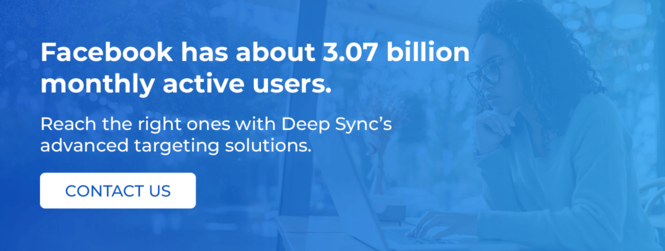

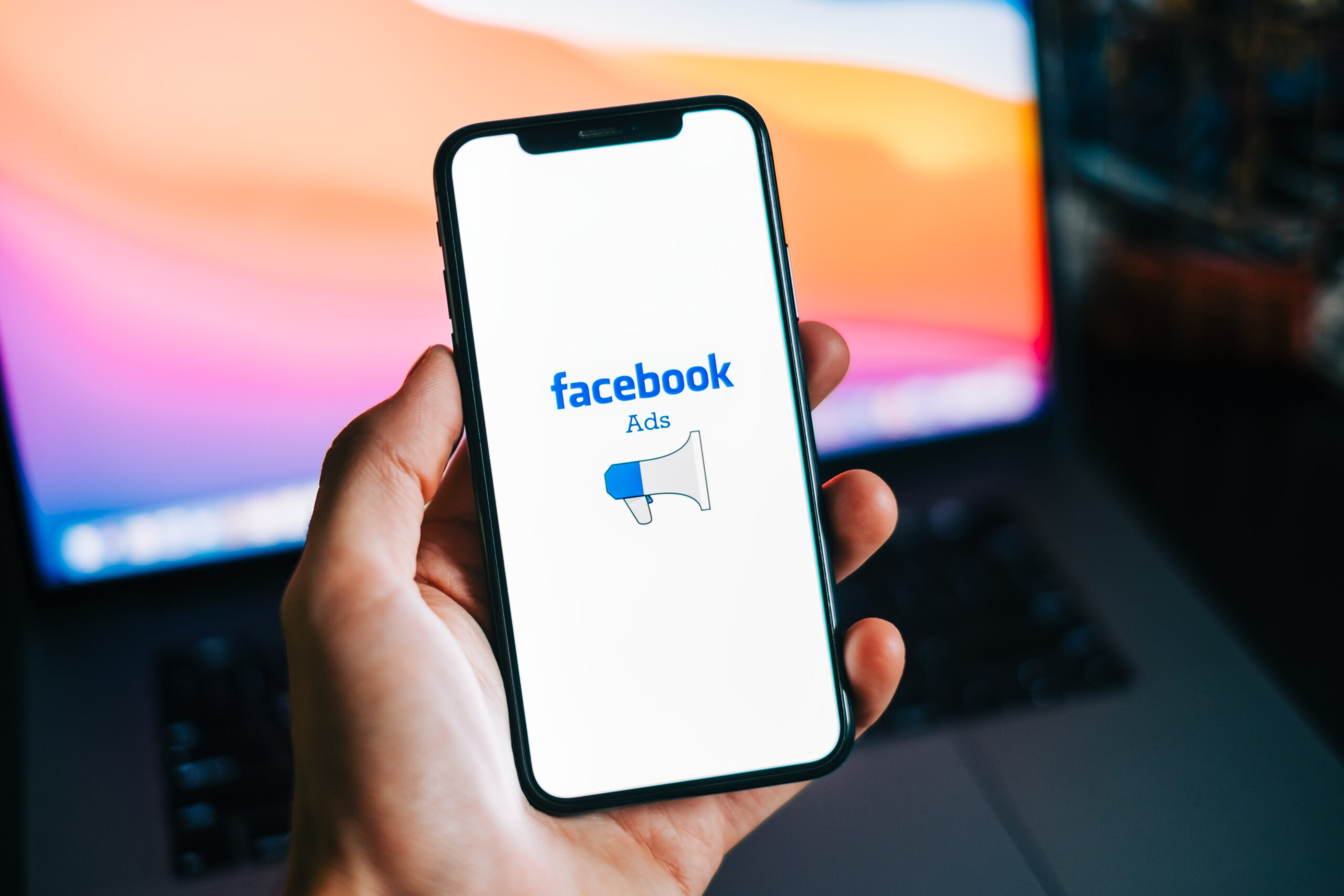







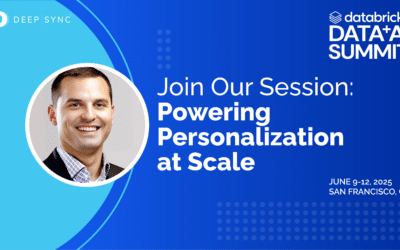

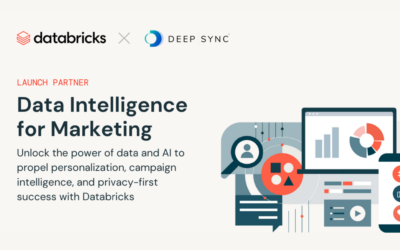
0 Comments